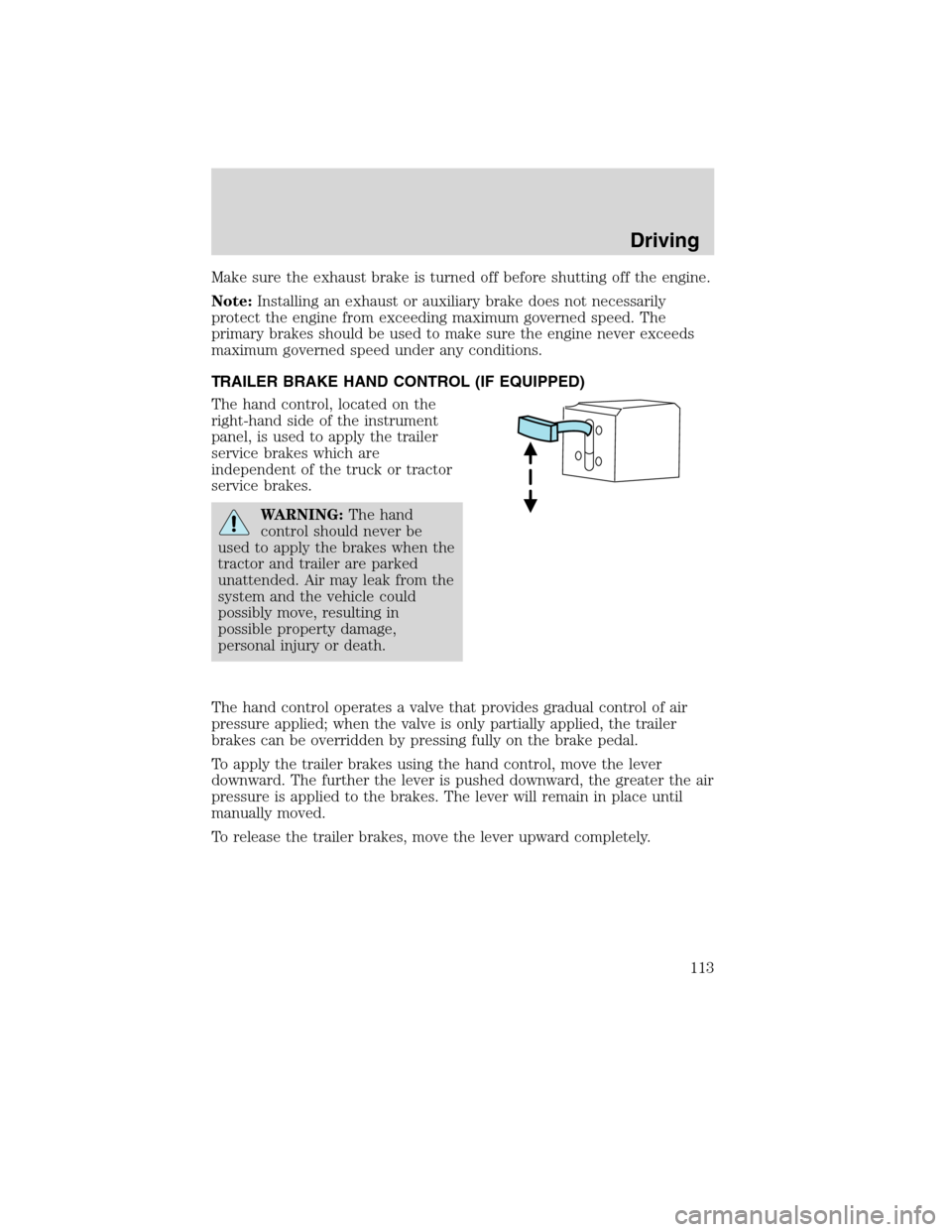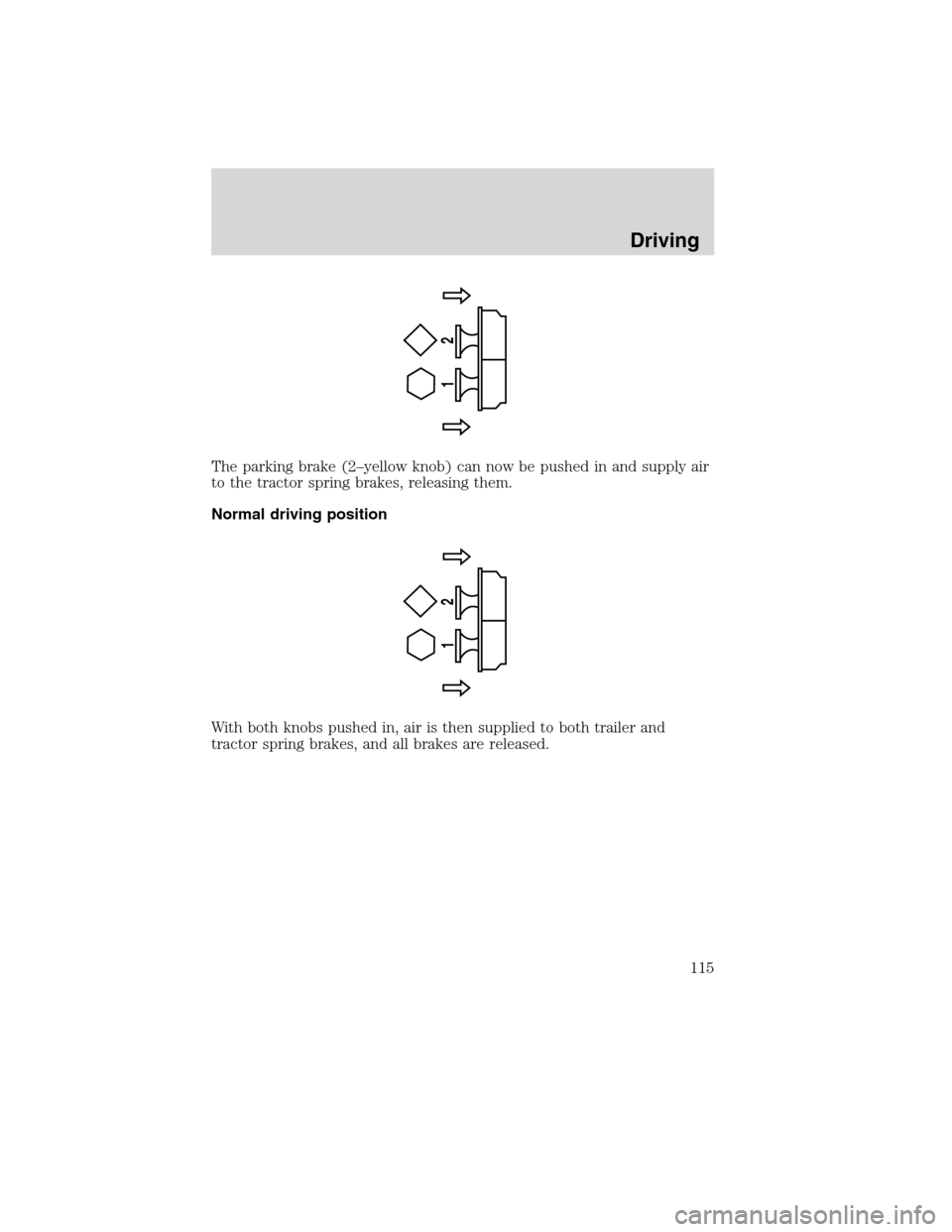2010 FORD F650 trailer
[x] Cancel search: trailerPage 10 of 274

FEDERAL HIGHWAY ADMINISTRATION REGULATION
Regulations such as those issued by the Federal Highway Administration
or issued pursuant to the Occupational Safety and Health Act (OSHA),
and/or state and local laws and regulations may require additional
equipment for the way you intend to use the vehicle. It is the
responsibility of the registered owner to determine the applicability of
such laws and regulations to your intended use for the vehicle, and to
arrange for the installation of required equipment. Your dealer has
information about the availability of equipment which may be ordered for
your vehicle.
ENTERING, EXITING AND/OR CLIMBING ON THIS VEHICLE
You must be careful and deliberate to minimize the possibility of personal
injury from a slip and fall when entering, exiting and/or climbing on this
vehicle. Always use the steps and assist handles before climbing. Do not
skip any steps or assist handles. Use three point contact at all times with
at least two feet and one hand or two hands and one foot firmly placed
during all phases of entering, exiting and/or climbing. Always keep your
shoe soles and hands clean. Keep the steps and assist handles free of
snow, ice, oil, grease, substances or debris. Be sure to use extra care in
bad weather. Avoid wearing thick gloves. Always perform trailer hook-up
while standing on the ground.
WARNING:Do not carry items while entering, exiting, and/or
climbing. Make sure you keep a firm grip. Always FACE the
VEHICLE STEP and HANDLE SYSTEM while climbing up and down.
Do not climb behind the cab unless you have three point contact with
a step and handle system at all times.
Introduction
10
2010 F-650/750(f67)
Supplement(supplement), 1st Printing
USA(fus)
Page 15 of 274

Engine starting (parking brake applied)
Air brake check:Check the air brakes in the following manner
(Chock the wheels, if necessary. Push in the
parking brake and on tractors, also push in the
tractor parking brake knob):
1. Check the that air compressor or governor
cut-out pressure is approximately 120 psi
(827 kPa).
2. Turn off the engine and turn the key back
to the on position, without starting the engine.
3. Without the brake pedal applied, note the
air pressure drop for one minute. It should be
less than 2 psi (14 kPa) for single vehicle and
3 psi (21 kPa) for combination vehicles.
4. Press and hold the brake pedal with 90 psi
(621 kPa) or more and make sure there is no
more than a 3 psi (21 kPa) per minute leak;
for combination vehicles, no more than 4 psi
(28 kPa) per minute.
5. Pump the brake pedal to deplete the system
of air pressure. The warning light and chime
should activate at 57 psi (393 kPa).
6. Pump the brake pedal and make sure the
parking brake and trailer parking brake knobs
pop out at 20 psi (138 kPa) or higher.
Automatic
transmission fluid:With the engine idling at normal operating
temperature and the parking brake applied,
check the automatic transmission fluid. If fluid
needs to be added, place the transmission in
the appropriate gear as specified in the
transmission operator’s manual and refer to
Transmission fluidin theMaintenance and
Specificationschapter.
Vehicle Inspection Guide
15
2010 F-650/750(f67)
Supplement(supplement), 1st Printing
USA(fus)
Page 21 of 274

Rear wheels
Spacers:Make sure dual wheels are evenly separated
and that tires are not touching one another.
Rims:Check for damaged or bent rims. Rims should
not have welding repairs and no rust trails that
indicate it is loose on the wheel.
Lug nuts:Make sure all lug nuts are present and not
loose (look for rust trails around the lug nuts).
There should be no cracks radiating from the
lug bolt holes or distortion of the bolt holes.
Trailer
If you are pulling a trailer, an inspection of the trailer similar to that of
the tractor should be done. Such an inspection should follow trailer
manufacturer recommendations and should include at a minimum:
general condition, landing gear, doors, sides, lights, reflectors,
suspension, brakes, tires, wheels, cargo placement, stability and
tie-downs.
Transmission
If your vehicle is equipped with an automatic transmission, regularly
check the transmission’s neutral start switch. The engine should only
start in the N (Neutral) or P (Park) positions.
WARNING:If the unit starts in gear and/or the neutral start
switch is not functioning correctly, the vehicle may inadvertently
move which could result in property damage, personal injury or death.
Check the transmission fluid level and shift linkage for proper operation.
Vehicle Inspection Guide
21
2010 F-650/750(f67)
Supplement(supplement), 1st Printing
USA(fus)
Page 26 of 274

Trailer Anti-lock Brake System
(ABS):Illuminates briefly when the
engine is powered-up and only when
a PLC trailer or a PLC diagnostic
tool is connected. If the light
remains on after the vehicle is started, continues to flash or fails to
illuminate, have the system serviced immediately.
Anti-lock Brake System (ABS):If
the ABS light stays illuminated or
continues to flash, a malfunction has
been detected, have the system
serviced immediately. Normal
braking is still functional unless the brake warning light also is
illuminated.
Check transmission (Allison
automatic transmission only):
The lamp will illuminate for several
seconds after the ignition is turned
to the on position. Illumination of this light while driving indicates that a
problem has been detected and shifting may be restricted. Depending
upon the severity of the problem, the read-out digit on the shifter
display may be blank. Operation may continue in order to reach service
assistance. The ECU may not respond to shift selector requests, since
operating limitations are being placed on the transmission, i.e. upshifts
and downshifts may be restricted. Direction changes will not occur.
Refer to your transmission operator’s manual for more information.
Safety belt:Reminds you to fasten
your safety belt.
Range inhibit:Illuminates when
the transmission is not engaged in
the selected gear. The warning light
will go off when the gearshift lever
is adjusted in to the appropriate gear.
Refer to your transmission operator’s manual for more information.
ABS
CHECK
TRANS
RANGE
INHIBIT
Instrument Cluster
26
2010 F-650/750(f67)
Supplement(supplement), 1st Printing
USA(fus)
Page 59 of 274

The mirror heating elements are designed to operate regardless of the
geographic location of the vehicle. There is no switch to turn on, or
other operator involvement required other than to start the vehicle.
The spotter mirror (if equipped) is not heated.
Foldaway mirrors
The mirrors can be manually folded
forward or backwards for narrow
spaces like driving through an
automatic car wash or backing out
of a garage with the trailer tow
mirror.
The telescoping feature (if
equipped) allows the mirror to
extend approximately three inches
(76 mm). This feature is especially
useful to the driver when towing a
trailer.
SPEED CONTROL (IF EQUIPPED)
To turn speed control on
Press CRUISE RPM. If the vehicle is
moving, speed control will be
enabled; if the vehicle is stationary,
engine RPM can be controlled.
WARNING:Do not use the speed control in heavy traffic or on
roads that are winding, slippery, or unpaved.
Do not shift the gearshift lever into N (Neutral) with the speed
control on.
CRUISE
RPM
OFF
Driver Controls
59
2010 F-650/750(f67)
Supplement(supplement), 1st Printing
USA(fus)
Page 113 of 274

Make sure the exhaust brake is turned off before shutting off the engine.
Note:Installing an exhaust or auxiliary brake does not necessarily
protect the engine from exceeding maximum governed speed. The
primary brakes should be used to make sure the engine never exceeds
maximum governed speed under any conditions.
TRAILER BRAKE HAND CONTROL (IF EQUIPPED)
The hand control, located on the
right-hand side of the instrument
panel, is used to apply the trailer
service brakes which are
independent of the truck or tractor
service brakes.
WARNING:The hand
control should never be
used to apply the brakes when the
tractor and trailer are parked
unattended. Air may leak from the
system and the vehicle could
possibly move, resulting in
possible property damage,
personal injury or death.
The hand control operates a valve that provides gradual control of air
pressure applied; when the valve is only partially applied, the trailer
brakes can be overridden by pressing fully on the brake pedal.
To apply the trailer brakes using the hand control, move the lever
downward. The further the lever is pushed downward, the greater the air
pressure is applied to the brakes. The lever will remain in place until
manually moved.
To release the trailer brakes, move the lever upward completely.
Driving
113
2010 F-650/750(f67)
Supplement(supplement), 1st Printing
USA(fus)
Page 114 of 274

TRAILER AIR SUPPLY AND PARKING BRAKE MODULAR
CONTROLS (IF EQUIPPED)
The trailer air supply valve delivers air to the trailer supply and will
automatically pop out, shutting off the trailer supply, if pressure is
decreased to approximately 35 psi (249 kPa).
The parking brake controls the spring brakes on the tractor. When the
knob is pulled out it causes the trailer supply valve to pop out, applying
both the tractor and trailer parking brakes. The trailer brakes may be
independently released by pushing only the trailer air supply valve in.
Initial charge
With the air system completely discharged, both knobs (1 and 2) will be
out. When the air pressure reaches 70 psi (483 kPa) the trailer air
supply (1 – red knob) may be pushed in and should stay in charging the
trailer air system and releasing the trailer brakes.
TRAILER
AIR SUPPLY
NOT FOR PARKING
TO
TOPULL
SUPPLY
EVACUATE
PUSH
12 12
Driving
114
2010 F-650/750(f67)
Supplement(supplement), 1st Printing
USA(fus)
Page 115 of 274

The parking brake (2–yellow knob) can now be pushed in and supply air
to the tractor spring brakes, releasing them.
Normal driving position
With both knobs pushed in, air is then supplied to both trailer and
tractor spring brakes, and all brakes are released.
12
12
Driving
115
2010 F-650/750(f67)
Supplement(supplement), 1st Printing
USA(fus)